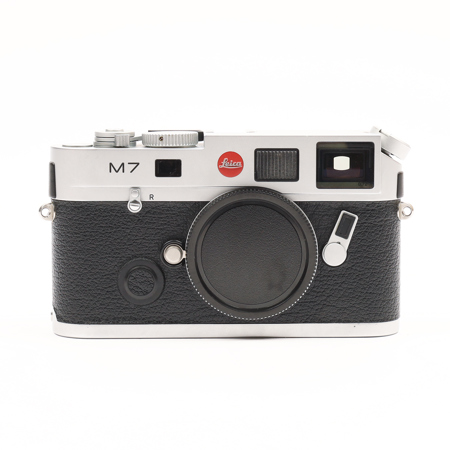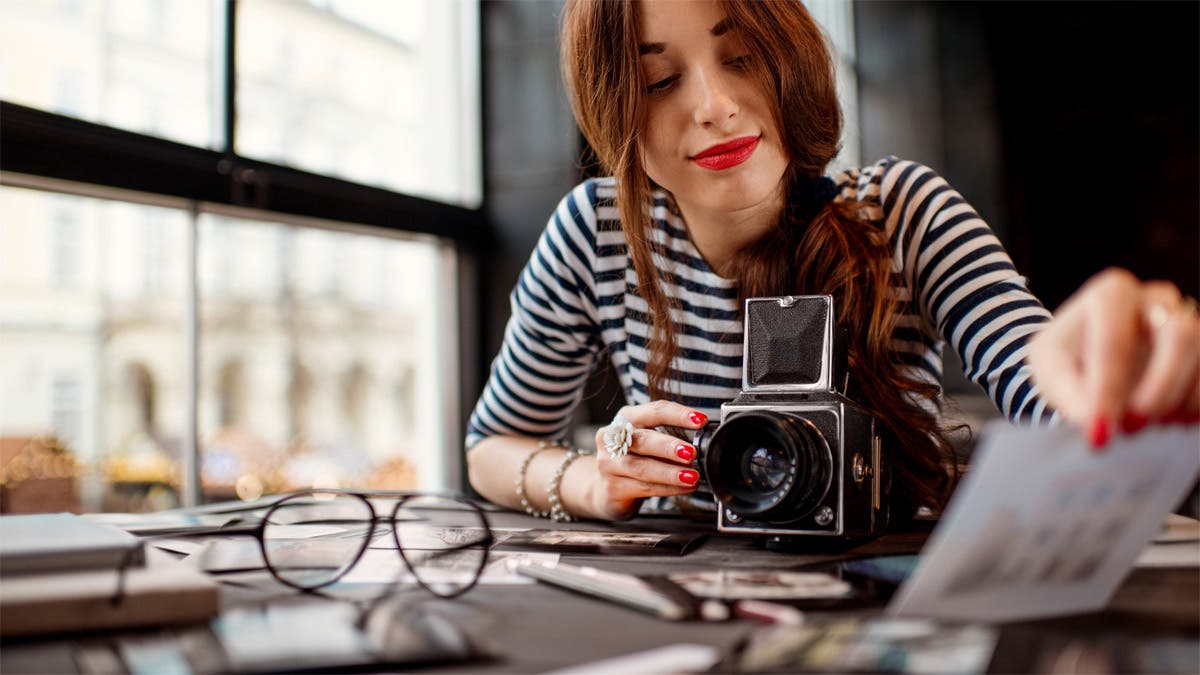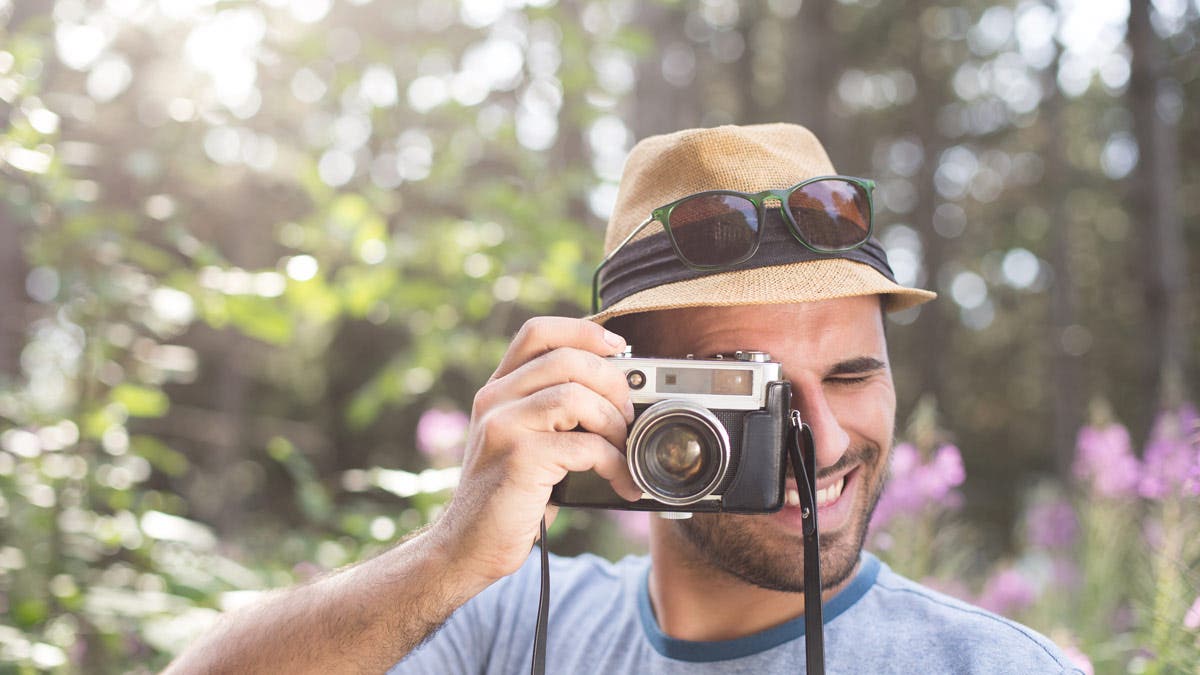







See Options
Need help? Ask our experts.
Review Summary
2016-12-26T08:03:49
Amazing camera build. Feels like it was hand built. Also got the summicron 35mm lens. Great combination. Haven't developed any film yet. First time user of film camera. Wanted the best film camera out there. The Leica M7 IMHO is the best. Also considered getting the M6 and MP but with with the M7 because of the AE.
Avinash K.
2016-07-06T09:00:41
Simply the best manual focus film camera sold today.
Glenn B.
2012-01-15T19:00:00
The M7 is the perfect film companion to the M9. They are completely interchangeable in your hand.
Sam E.
2011-12-04T19:00:00
The M7 is the closest film camera to the digital M9. It's really great to go back and fourth without changing the way I shoot.
Sam E.
2007-02-04T19:00:00
The Leica M7 -- as of this writing -- appears to be the last of Leica's film-based M-series. The M8, of course, is a digital camera; the key advance that the M7 offers, compared to the feature set already present in the M6 (which I also own), is aperture-priority automation. As someone who has owned many 35mm cameras offering various forms of automation (shutter-priority, aperture-priority, programmed automation, etc.), it took me a while to appreciate the specific value of aperture-priority automation. For me, the main attraction of aperture-priority photography has to do with the ability -- in concert with fast Leica lenses -- to strongly influence an image's depth-of-field.....to make the subject leap out of the picture, letting the foreground and background fade into obscurity. And this, actually, leads to one of my few quibbles with the M7. Using the kinds of fast lenses that will produce the requisite shallow depth-of-field (e.g., the 35mm f/1.4, 75mm f/1.4, or 50mm f/1.0), I find that I frequently have to settle for a less-than-wide-open aperture because the fastest shutter speed available on the M7 is 1/1000 of a second.....and this is often true even with the slowest film I can find. Which leaves us with.....after-sundown photography? In terms of its operating characteristics, the camera just feels good to use; the operation is smooth and very unobtrusive. And the images that it produces are wonderful -- which, I guess, you'd expect, given the cost of the body and a couple of lenses. The M7 is not the proper camera for the casual snapshooter. The required investment of money (to acquire the hardware) and time (to capture images -- yes, it focuses quickly, but it is NOT autofocus) will necessarily limit the M7's appeal to a comparatively small audience. But for those who are not content holding their camera at arm's length and praying that the resultant image will be recognizable, for those who want to become more involved in the process of photography, for those who are viscerally attracted to fine machinery, and certainly for those who can afford the steep start-up costs, the M7 is a unique and wonderful instrument.
DR H.
35mm Rangefinder camera
Leica M lenses with focal lengths from 21 to 135mm
Manual
Manual
Manual & Aperture-priority
Selective through-the-lens (TTL) exposure metering at working aperture. Center-weighted integral TTL metering for flash
exposures with dedicated SCA 3000 standard flash units.
EV -2 To EV +20 with f/1.0 lens at ISO 100
DX-coded film 25/15° to ISO 5000/38°
manual setting from ISO 6/9° to ISO 25000/45°.
Controlled electronically, plus two mechanically-set shutter speeds : 1/60s and 1/125 s. Shutter speeds stepless from 32 s to 1/1000 s in the 'AUTO' automatic shutter speed control mode. In the manual mode, from 4 s to 1/1000s in full steps, plus "B" for time exposures of any length.
Shutter release Three stages : energizing - metered exposure value storage - release. Release button has an integrated thread for standard cable releases.
No
No
speed 1/50s
Yes
Manual
Large, bright combined range- and viewfinder with bright-line frames and automatic parallax compensation.
Flash status; four-digit, seven-segment LED digital display ;film speed;exposure correction warnings;shutter speed in the auto mode;stored exposure setting;warnings of brightness readings in auto shutter speed and of exposure times longer than 2 seconds. LED light balance with two triangular and a central round LED in the manual exposure control mode.
corrected for -0.5 diopter. Correction lenses from -3 to +3 diopters are available.
optional standard mechanical cable release
Two 3-Volt 2L76 (DL 1/3N) lithium batteries
5.4 x 3.1 x 1.5" (138.0 x 79.5 x 38mm)
1.23 lb (610 g) w/out batteries

With digital cameras of all varieties dominating the market, now is a great time to buy a film camera. Yes...a film camera! Updated for Summer 2010.

What can you say about the Leica M3? That more than 50 years after its introduction in 1954 it is still the camera by which all 35mm rangefinder cameras are judged!
Awesome deal on a used camera.
By Sam E.
The M7 is the perfect film companion to the M9. They are completely interchangeable in your hand.
Best film camera
By Avinash K.
Amazing camera build. Feels like it was hand built. Also got the summicron 35mm lens. Great combination. Haven't developed any film yet. First time user of film camera. Wanted the best film camera out there. The Leica M7 IMHO is the best. Also considered getting the M6 and MP but with with the M7 because of the AE.
Classics are works that clash with the present. They are never modified - instead they are re-interpreted on the basis of a changed world: With the LEICA M7, a classic celebrates a premiere. Convenience and fast operation of the camera have been enhanced even further with automatic shutter speed control and detail improvements. The Leica cloth focal plane shutter - with its vibration-free and quiet action is a must for a genuine Leica M camera - is now controlled electronically. Form, size and the proven operating concept were retained without changes. Virtually all system components of the preceding models remain compatible. Photography with the LEICA M7 is a surprisingly and yet unchanged experience.
The LEICA M7 is available with the three viewfinder magnifications of 0.58 x, 0.72 x, and 0.85 x. It is tailored ideally to the preferences and needs of the photographer : The 0.58 x magnification for a great overview with wide-angle lenses and for eyeglass wearers. 0.72 x as a universal standard (also featured on the black lacquer version). 0.85 x for accurate focusing with medium focal length lenses and with Leica M tele lenses.